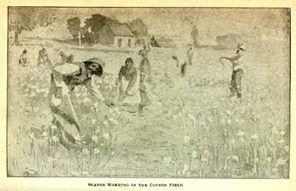
It’s always a bit of a facer to track down some lovely, idealized idea about a person or artwork and find out the real story. So it’s been with Robert Burns and two of his famous love songs, “O My Luve’s Like a Red, Red Rose” and “I’ll Ay Call In by Yon Town.” Was he a tender, faithful lover who paid the object of his desire these tributes? Does he stand as an example of proper behavior to those reading his poetry? Did he . . . well, I think you get the gist: the answer to these and similar questions is a resounding “no.”
When Burns died at age 37 he’d fathered 13 children (that we know of) by four different women and had love affairs with a number of others. The only woman he married, though, was Jean Armour. Were she alive today she’d probably be labeled as an “enabler;” she even went so far as to bring up Burns’ daughter by another woman who was born the same month as his son with Jean. As she said, “Oor Rab needed twa wives.” Just to sketch out the relationship between Jean and Burns takes up a fair amount of space. He met her in 1785 when Burns was 26. She quickly became pregnant by him, but her father refused to let the couple marry because of Burns’ poor financial prospects. He went off and got involved with someone else while Jean gave birth to twins. The couple reconciled and married after “many bizarre turnings” and yet another set of twins. She seems to have remained faithful, and her last child by Burns was born on the day of his funeral. He was an on-again, off-again presence in her life. I can’t imagine what they talked about when he was home!


 I remember back in elementary school being teased a bit by some Jewish classmates about the superiority of Hanukkah over Christmas: “You only have one day to get presents, but we have eight.” I’m sure I wasn’t quick-witted enough to mention the plethora of gift-giving in “The Twelve Days of Christmas” with its extra days of celebration. So here’s the information I didn’t have back then.
I remember back in elementary school being teased a bit by some Jewish classmates about the superiority of Hanukkah over Christmas: “You only have one day to get presents, but we have eight.” I’m sure I wasn’t quick-witted enough to mention the plethora of gift-giving in “The Twelve Days of Christmas” with its extra days of celebration. So here’s the information I didn’t have back then.


 This is another one of those endlessly variable folk songs with about a hundred verses. You might ask, though, “Okay, but who’s the ‘she’ who’s comin’ round the mountain?” Good question. I originally made an assumption here, thinking that this was a literal woman, but she’s not that in the original at all. Guess what ‘she’ actually is? A chariot. That’s right. This song is drawn from a spiritual about the Second Coming of Christ, and the “she” refers to the chariot that “King Jesus” will be riding. As with many spirituals, though, there may be an underlying meaning about freedom and the Underground Railroad.
This is another one of those endlessly variable folk songs with about a hundred verses. You might ask, though, “Okay, but who’s the ‘she’ who’s comin’ round the mountain?” Good question. I originally made an assumption here, thinking that this was a literal woman, but she’s not that in the original at all. Guess what ‘she’ actually is? A chariot. That’s right. This song is drawn from a spiritual about the Second Coming of Christ, and the “she” refers to the chariot that “King Jesus” will be riding. As with many spirituals, though, there may be an underlying meaning about freedom and the Underground Railroad.

